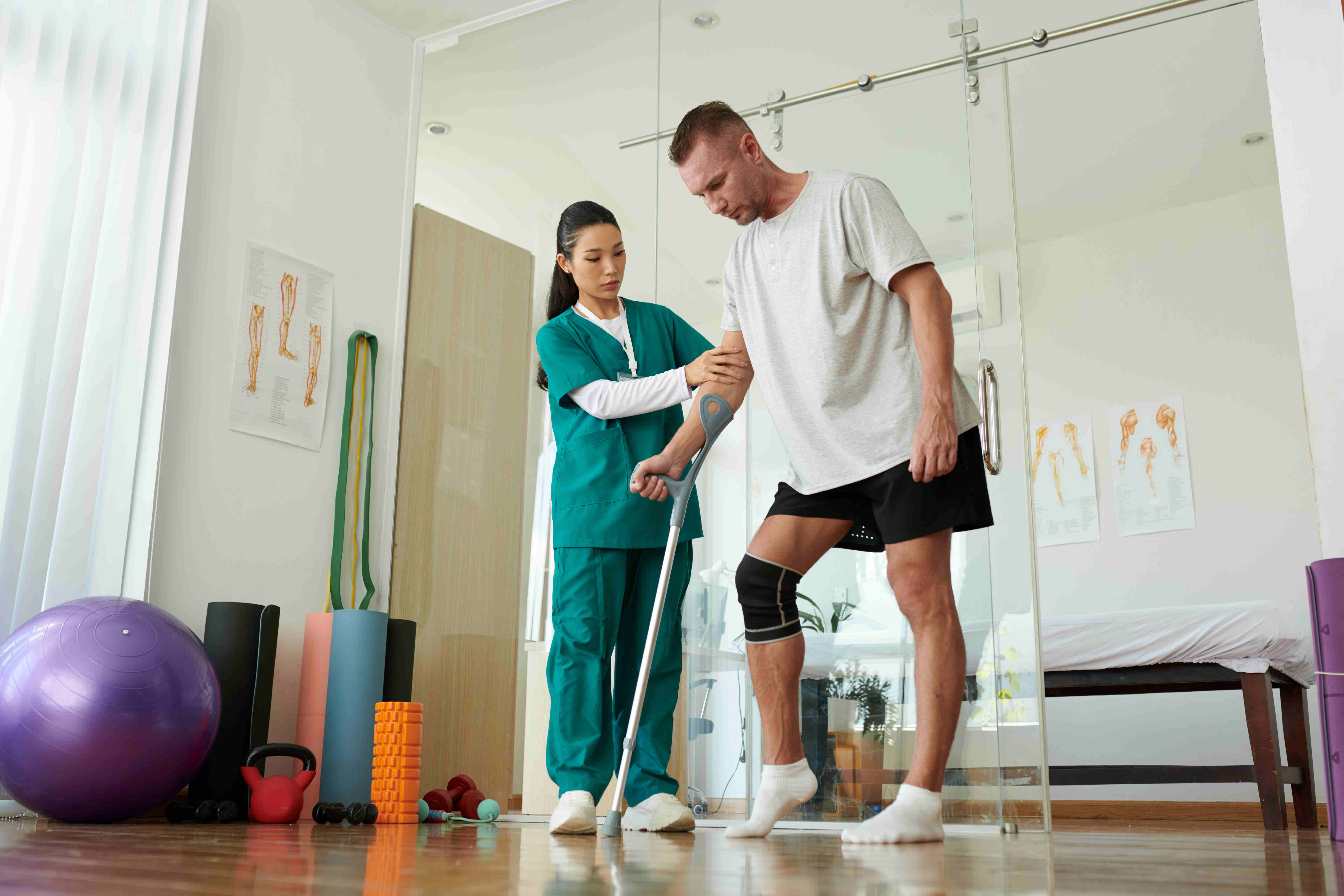Knee Replacement Recovery Timeline: What to Expect Week-by-Week

Immediate post-surgery care is crucial in the first week of knee replacement recovery.
Recovering from knee replacement surgery is a journey in itself. It involves various stages before reaching completion. A knee replacement surgery, also known as knee arthroplasty, involves replacing the injured or damaged parts of a knee. This surgery helps the knee work better and relieves people who suffer from knee pain or arthritis. Knee Replacement Recovery is what comes after this surgery.
If you are planning to get a knee arthroplasty and are curious about what kind of pain after knee surgery you will be facing or how long it takes to recover from a knee replacement, this article is for you. We have put together a week-by-week guide that covers all the stages of knee replacement recovery to help you better prepare for this journey.
How long does Knee Replacement Recovery take?
The average Knee Replacement Recovery lasts anywhere from 6 to 12 weeks, depending on the individual. While most people resume day-to-day activities by the 6th week, it might take up to 12 weeks to be comfortable riding a bike, kneeling, or crouching down.
Several factors decide the time your Knee Replacement Recovery might take. Age, overall health, and the type of surgery opted for, whether partial or total knee replacement, all play a huge part.
Let’s look at what the general Knee Replacement Recovery Timeline week-by-week looks like:
Knee Replacement Recovery Timeline: Week 1
It is usually advised to start the Knee Replacement Recovery within 24 hours of the surgery. Right after the surgery, the patient experiences pain and swelling. Patients start walking with the help of a walker from the first day. The pain level is usually high initially, and patients cannot stand or walk for long. You start by covering short durations and small distances with some assistance.
Doctors recommend that patients try to straighten their knees within 48 hours of surgery. In the first week of recovery, patients might be given a set of exercises to perform daily. The physiotherapy will include gait training, where the patient will relearn proper walking techniques and regain balance and strength. Based on individual recovery rate, some people are also allowed to pedal gently on an exercise bike. In the first week of recovery, the patient will be taking pain medication to help them cope with the pain after knee surgery. Patients must treat their swelling with ice packs and regularly move their legs.
Milestone: By the end of the first week, they should be able to extend their legs fully.
Knee Replacement Recovery Timeline: Weeks 2 and 3
By this time, the patient would probably not need a walking stick or cane. Regular exercises from week one should allow them to move better and expand their range of activities. In weeks 2 and 3, your PT might recommend exercises like heel slides, leg lifts, and exercise bike pedalling. By this time, the pain will go down significantly, while swelling might still occur.
Milestone: Ideally, by the end of the third week, the patient should be able to stand for 10 minutes without support.

Walking with assistance begins as early as day one post-knee replacement surgery.
Knee Replacement Recovery Timeline: Weeks 4 to 6
This is when patients get ready to return to their work and daily routine. During weeks 4 to 6, the physical training includes toe and heel raises, side-laying hip abductions, and gentle stair exercises. The patient might also be advised to take longer walks without the help of a walking stick. The regular exercises and medications from week 1 should have made the pain and swelling go away by now.
By the end of week six, the patient should be ready to return to work, given that it's a desk job. If their job requires walking, running, travelling, or lifting, they might need up to three months to return to work. If the surgeon approves, they might also start driving. It is suggested that they start driving in an empty space, like a parking lot, before stepping onto the road.
Milestone: By the end of six weeks, you should be able to resume your desk job and resume light errands and chores.
Knee Replacement Recovery Timeline: Weeks 7 to 11
By week 7, the focus of your physical therapy will shift to regaining strength, mobility, and a range of motions. At this stage, the exercises will evolve. You will likely start cycling on a stationary bike to increase your mobility. Leg balances and squats will be included in your training. You may be asked to do step-ups, where you will step up and down a single step, alternating the feet you start with every time.
While it might look like you have recovered and there is no need for physical therapy, it is important to continue for 12 weeks. You might be ready to do simple tasks by now, but if you want to avoid any future pain and discomfort, you should keep up with the training for a few more weeks.
Milestone: By the end of the 11th week, you should return to performing activities like cycling, running, swimming, climbing stairs, and getting down easily and confidently.

Regaining mobility through the 12-week knee replacement recovery timeline allows patients to return to their favourite sports.
Knee Replacement Recovery Timeline: Week 12
If you have followed the 11 weeks of physical therapy, then by now you should have almost no pain in your knee, and you should be able to do a range of activities. Cycling, dancing, and running should be a comfortable experience by now. However, if you ever feel any discomfort, it's important to rest your knees. While you can perform these activities, prolonged durations might cause some pain. Cycling and walking are highly recommended, while you should still take precautions when kneeling or squatting. Additionally, avoid excessive stairs.
Milestone: At the end of your Knee Replacement Recovery, you should be fit to resume golfing, gardening, and light yoga.
Conclusion
Your knees keep you standing, so take the time to heal right. Remember, while this is the general Knee Replacement Recovery Timeline, some people might need extra time. If you experience any pain, consult your surgeon and PT immediately. Do not leave any room for doubt. Your health and well-being should be of paramount importance when recovering from surgery. Stick with your physical therapy, track your progress, and don’t hesitate to ask your healthcare team questions.